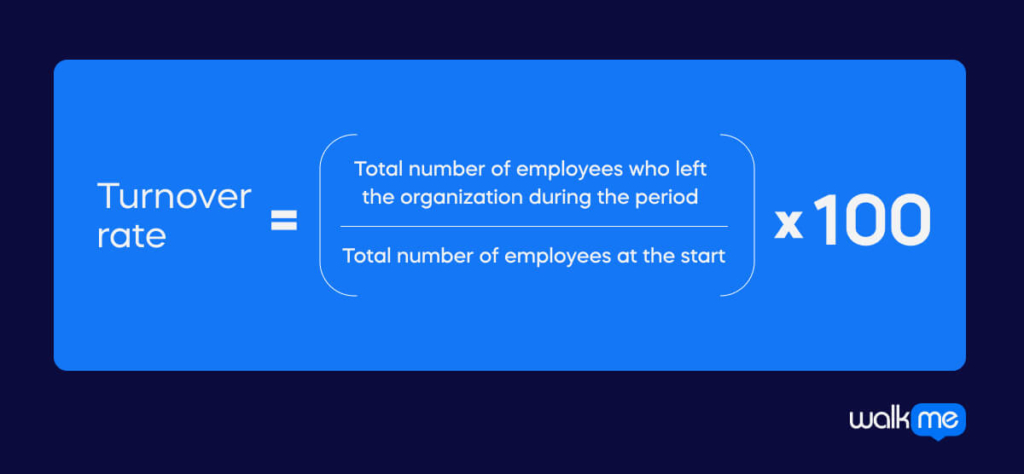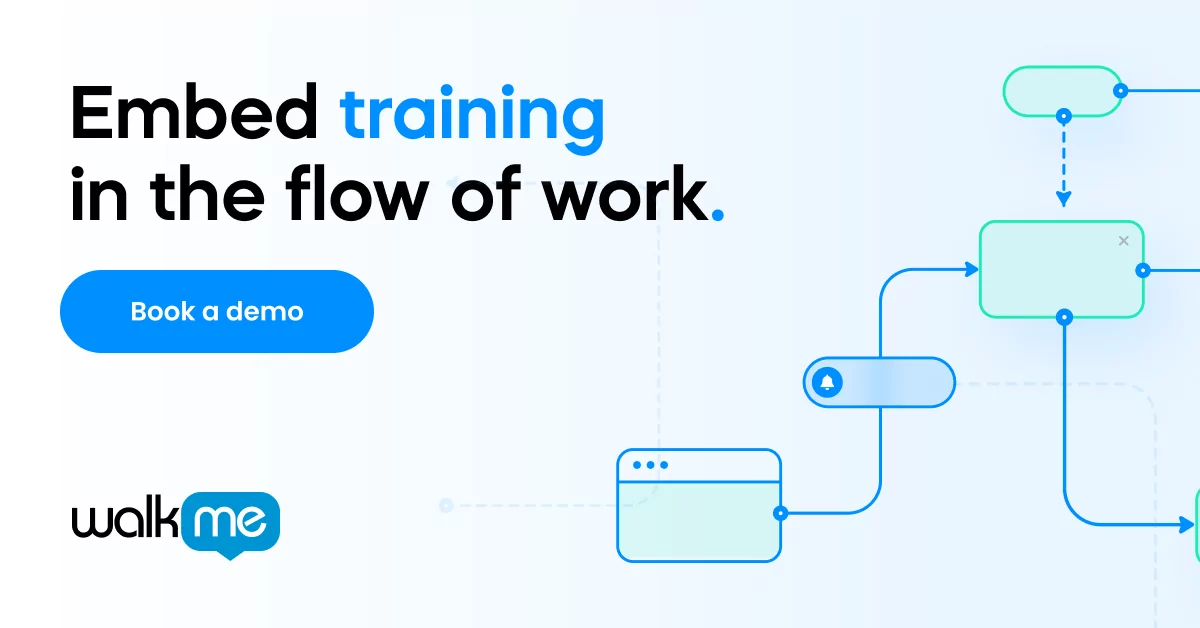Understanding and improving employee engagement is crucial for enhancing productivity and retaining talent. Employee engagement metrics are essential for assessing employees’ commitment to their work.
They also reveal the health of the organization. This influence extends to aspects ranging from performance levels to staff retention.
By systematically tracking these key indicators, leaders can make informed decisions. This approach helps create a more vibrant and productive work environment.
The path to a fully engaged workforce includes knowing what to measure and how to interpret the data. The challenge involves selecting metrics aligned with organizational goals. The insights gained can highlight areas for improvement. They can also guide strategies to boost employee morale and loyalty.
This article will detail employee engagement metrics and why they are important to track. Then, it goes into the 17 most important employee engagement metrics to track and how you can measure employee engagement.
What are employee engagement metrics?
Employee engagement metrics can help gauge an employee’s commitment to an organization.
You can do this by analyzing various qualitative and quantitative metrics. This process allows you to identify areas requiring improvement throughout the organization.
These metrics offer insights into various aspects important to your team. These aspects include employee performance and job satisfaction. It can also consider work-life balance, relationship with their manager, and employee recognition.
Why is it important to track employee engagement metrics?
Better employee engagement can enhance employee morale and motivation. It can also improve the bottom line, increase retention, and reduce the cost of turnover. Additionally, it helps identify leadership effectiveness. It can also guide strategies for professional development and training programs.
Without employee engagement, there’s no team engagement. This makes it more challenging to improve business outcomes.
By monitoring employee engagement metrics, leaders can decide to reduce these costs. They allow organizations to gain a comprehensive view of employee engagement.
In this way, you can identify areas needing improvement. Thus, you could plan to enhance employee morale, loyalty, and overall productivity. In essence, employee engagement metrics are not just tools for evaluation. They are essential for fostering a vibrant, productive work environment.
17 Important employee engagement metrics to track
Now that you understand why employee engagement metrics are imperative, let’s look at 17 of the most important ones:
Employee turnover rate
The Employee Turnover Rate (ETR) reflects the percentage of employees who leave a company within a specified timeframe. Tracking this metric is crucial. This is because engaged employees are generally less inclined to leave. Organizations can significantly reduce a high turnover rate by creating an engaged workforce.
To calculate the turnover rate, divide the total number of employees who left the organization during the period by the total number of employees at the start. Then, multiply this result by 100 to express it as a percentage. Additionally, examining the duration of employee tenure can offer insights.

If employees leave after two years, it may indicate feelings of stagnation or limited growth opportunities. If departures occur after six months, it might signal the need to revise the onboarding process.
Employee performance
Employee performance metrics span several categories. Work quality metrics encompass factors like the number of errors, net promoter score, and 360-degree feedback. Work quantity metrics focus on the number of sales, number of units produced, and handling time.
Work efficiency metrics aim to balance qualitative and quantitative measures of employee performance. Organizational performance metrics evaluate revenue per employee and human capital ROI.
Analyzing work performance alongside employee engagement reveals a strong correlation. Improving engagement can enhance performance. Conversely, increased performance can elevate engagement levels.
Employee Satisfaction Index (ESI)

The Employee Satisfaction Index (ESI) is a metric employed to gauge employees’ job satisfaction levels. This index typically ranges from 1 to 100. It is derived from a survey that commonly includes a question that considers how satisfied employees are with their current workplace. It also looks at whether the current workplace meets their expectations and how closely it matches their ideal job.
Employees rate these questions on a scale of 1 to 10. 1 indicates the lowest satisfaction and 10 indicates the highest. The ESI provides a comprehensive view of employee experience. This approach enables organizations to track changes over time. It also allows them to make informed decisions. Lastly, they can establish effective strategies for attracting and retaining top talent.
Employee absenteeism rate
Employees regularly missing work is known as absenteeism, which signals employee disengagement. This metric calculates the percentage of employees absent over a specific period. A high absenteeism rate suggests high levels of employee disengagement.
To find the absenteeism rate, you use two numbers. These are the total days of absences (A) and the total workdays for the period (W). Divide the days of absence (A) by the number of workdays (W) and multiply the result by 100.
Customer satisfaction rate
Low employee engagement rates frequently result in low customer satisfaction. Engaged employees fully immerse themselves in and feel enthusiastic about their work.
Measuring customer satisfaction can assess how well employees meet or exceed customer expectations. This measurement can state the level of employee engagement within the organization.
Employee participation in surveys
Companies use employee surveys to gather opinions, which help them make data-driven decisions. However, low participation rates can lead to unreliable and non-representative data, making the surveys unsuccessful.
Measuring employee participation in surveys is crucial for obtaining reliable data. HR teams can take proactive steps to improve this key employee engagement metric. Initiatives may include addressing communication gaps and ensuring survey anonymity. They can also prove the value of feedback. They could do this by implementing employee engagement initiatives based on employees’ comments.
New hire 90-day failure rate
When a new hire departs within the first 90 days, it suggests a mismatch between their expectations and the actual workplace or job role. This often occurs in a disengaging work environment.
In such environments, employees may not feel connected, motivated, or valued. Assessing your new hire’s 90-day turnover rate can help identify if employee engagement is an issue in your organization.
It can also highlight areas for improvement to enhance retention. Exit surveys and anonymous employee feedback are valuable tools for gaining deeper insights.
Work-life balance rate

Measuring work-life balance is essential for preserving employees’ mental and physical health. It’s not only about retaining employees but also about their well-being. A straightforward way to track work-life balance is by asking employees to rate it in surveys. They can rate their satisfaction on a scale from zero to ten. Zero indicates not at all satisfied, and ten indicates complete satisfaction.
Additionally, you can ask other questions to gather similar insights. For example, you could inquire if employees are satisfied with their time outside of work. Low scores may suggest that employees are overworked or facing unrealistic expectations.
Such scores can indicate a need for HR to bring more team members on board or address a culture of presenteeism. You can also evaluate how employees use their paid time off (PTO). This evaluation can provide insights into their feelings about their workload and ability to take breaks.
Quality of work rate
The quality of work engagement metric assesses employees’ effectiveness and output quality. It measures how well individuals or teams complete tasks. Key components of this metric include the error rate, which shows how often mistakes happen, indicating employees’ attention to detail.
Accuracy evaluates the correctness of work, highlighting employees’ thoroughness. The defect rate examines flawed products, revealing the quality of craftsmanship and process efficiency. Compliance checks how well employees follow internal standards, laws, and industry norms. This indicates their commitment to quality and protocols.
Quality metrics are essential for evaluating employee engagement and performance. High-quality work often comes from engaged and committed employees who take pride in their work and strive for excellence.
The quality of work engagement metric focuses on the quality, precision, and adherence to employee work standards. It offers insights into their engagement, commitment, and skillfulness.
Professional growth

This process involves developing new knowledge to enhance personal and professional potential. It reflects an individual’s commitment to their development.
Motivated individuals seek new experiences that challenge and push them out of their comfort zones. They actively participate in communities and organizations that support their growth goals.
The growth of an employee often leads to improved performance and increased productivity. These improvements can be measured as engagement metrics. Tracking personal growth as an engagement metric encourages employees or customers to invest in themselves. It also maintains a culture of continuous learning and improvement.
To determine professional growth, you can ask employees how satisfied they are with their jobs and the work they do. You can also inquire if they feel their skills and talents are effectively utilized in their current role. Additionally, you could ask for suggestions on how to improve current training and development programs.
Employee review site ratings
Review site ratings above 3.5 on a 1 to 5 scale generally show positive employee perceptions. Ratings of 4 and 5 reflect high levels of employee satisfaction and engagement.
Higher ratings of 4 or 5 suggest that employees will likely be more committed to the organization’s success. Companies with consistently high ratings are often considered desirable places to work. They attract top talent and cultivate a culture of excellence.
If you notice that your company has lower ratings, this could be a time to review the employee package with further feedback.
Rewards and recognition

Employee recognition boosts employee engagement. It helps confirm or track the effectiveness of employee rewards and recognition programs. This is especially important for employees who go above and beyond to achieve company goals. Recognizing employees also helps assess productivity. It also helps identify the percentage of engaged employees in your organization.
Employees who feel fairly rewarded for their work will want to put in extra effort. Regular recognition makes employees feel valued by the organization. Key indicators of employee recognition include retention rate, employee loyalty, and motivation.
To measure this, questionnaires will be distributed to employees. Ask them about their satisfaction with the current employee rewards and recognition system. Inquire if they find the recognition or rewards valuable and feel recognized often enough.
A positive score indicates that employees are satisfied with workplace recognition. The results can also reveal how employees prefer to be recognized and how frequently they want recognition. As a result, you can enhance your rewards and employee recognition programs.
DEI score
You can use a diversity, equity, and inclusion score to gauge commitment to fostering a diverse, equitable, and inclusive workplace. This score considers factors like workforce diversity and company policies on equity and inclusion. It also finds diversity-related employee benefits and the overall workplace culture.
The DEI score serves as an engagement metric. This is because employees will be more engaged and motivated when they feel valued and included.
A high DEI score indicates that the organization commits to creating an inclusive environment. In such an environment, all employees feel valued and supported. This leads to better engagement, productivity, and retention.
To measure DEI-related engagement levels, you can use a survey to assess employees’ perceptions of the company’s DEI efforts. This could include how well the company communicates its diversity initiatives. You could also ask if employees have experienced discrimination and how it was addressed.
Analyzing these responses can help organizations identify areas to improve DEI practices or communication. This analysis can boost employee engagement and satisfaction.
Furthermore, organizations can use this data to identify issues employees care about. This identification can lead to creating opportunities for employee involvement in DEI initiatives.
Employee net promoter score (eNPS)
Employee Net Promoter Score (NPS) measures how likely employees are to endorse their workplace to acquaintances and family members. This metric is widely adopted due to its simplicity and efficiency.
Employees need to respond to one straightforward question. This is ‘Would you recommend our workplace to your friends and family?’ Responses range from 0 to 10. A score of 0 indicates the lowest likelihood. A score of 10 indicates the highest probability.
To calculate NPS, you start by minusing the percentage of the low raters, those rating 0 to 6, from the percentage of the high raters, those rating 9 or 10. Then, you exclude the responses with scores of 7 or 8 from the final score calculation.
Managerial effectiveness

The effectiveness of managers has a significant impact on employee engagement. Good managers prioritize effective communication and build personalized relationships with their team members. They schedule regular one-on-one meetings to connect with employees and address concerns. They can also provide constructive feedback.
However, spending too little or too much time on these meetings can reduce engagement. Excessive meetings can lead to overload, which affects overall well-being. Holding weekly one-on-one meetings can foster engagement without overwhelming employees.
To gauge management quality, ask employees questions that assess how effective the manager is. This could be in terms of providing clear direction and guidance for work. You could also ask whether an employee has regular meetings with a manager or whether the manager tends to skip these.
Workload balance rate
Workload balance is a metric that can state levels of employee engagement. Overwork can negatively impact employee satisfaction. Team members facing excessive workloads are likely to experience reduced job satisfaction.
Workload data provides insights into work distribution. It helps you identify overworked employees and those doing minimal work.
Maintaining a healthy work-life balance is essential. A balance between personal and professional lives is crucial for employee well-being. Disruptions to this balance can affect employee engagement and retention.
Employee retention rate
This metric represents the proportion of individuals who remain with an organization over a specific period.
Employees who are more engaged are generally more inclined to stay with an organization. A high retention rate indicates a highly engaged workforce. This increases productivity, innovation, and alignment with the organization’s mission.
But, a high retention rate could also suggest that underperforming employees are staying. This could impact productivity and cause frustration among high-performing employees.
To calculate your organization’s retention rate, divide the number of employees who left during a specified period by the total number of employees at the beginning of that period.
Ways to measure employee engagement
Evaluating employee engagement is critical for understanding your workforce’s motivation, satisfaction, and commitment. These methods provide concrete data to help guide your engagement strategies. Consistency is key when measuring employee engagement.
Here’s how you can measure employee engagement:
One-on-one interviews
One-on-one interviews offer a personal approach to understanding individual employee experiences. During these interviews, you listen to employee concerns, ideas, and feedback in depth. This method allows for immediate clarification. It also offers the opportunity to explore topics that may not emerge in surveys. Through this technique, you can uncover unique insights into employee morale. This can help you identify areas for improvement.
Annual engagement surveys
These surveys are distributed once a year and offer a macro, data-driven understanding. They can be cross-referenced with performance and productivity data. You can do this to reveal correlations between engagement levels and business outcomes. But, these surveys can be lengthy, taking employees up to 20 minutes to complete.
Pulse surveys
Pulse surveys are smaller surveys. You can distribute it on a quarterly, monthly, or even weekly basis. Regularly asking questions to measure employee engagement gives you a holistic view. It also allows you to track progress over time.
Focus groups

Focus groups involve gathering small groups of employees for structured discussions. They’re useful for exploring complex issues and creating an employee feedback loop. Skilled facilitation enables you to delve into nuances of workplace dynamics and employee sentiment. These may not be captured through other methods.
Focus groups provide a platform for a cross-section of employees to share reactions and stories. This sharing allows for a comprehensive understanding of company culture. Gathering data from focus groups helps identify patterns and trends. These insights provide a balanced overview of the company culture and methods for improvement. Focus groups offer a comprehensive review of organizational performance.
They accurately measure employee satisfaction, engagement, and morale. Focus groups encourage employee participation in assessing company culture. This empowers them to contribute to discussions and solutions. They also help identify areas for improvement and plan for future assessments. This allows targeted improvements to enhance the overall company culture.
The future of employee engagement metrics
Monitoring employee engagement is crucial for every organization. The level of employee engagement significantly impacts productivity and employee retention.
Measure employee engagement through work-life balance, employee performance, and managerial effectiveness. Performance reviews and employee engagement surveys offer effective ways to gauge employee satisfaction.
However, simply tracking employee engagement metrics isn’t enough. Developing action plans that address issues that may lead to disengagement is essential.
Do not start a generic ‘one-size-fits-all’ employee engagement metrics project. Instead, consider launching targeted, data-driven metric initiatives focused on the most critical issues.


